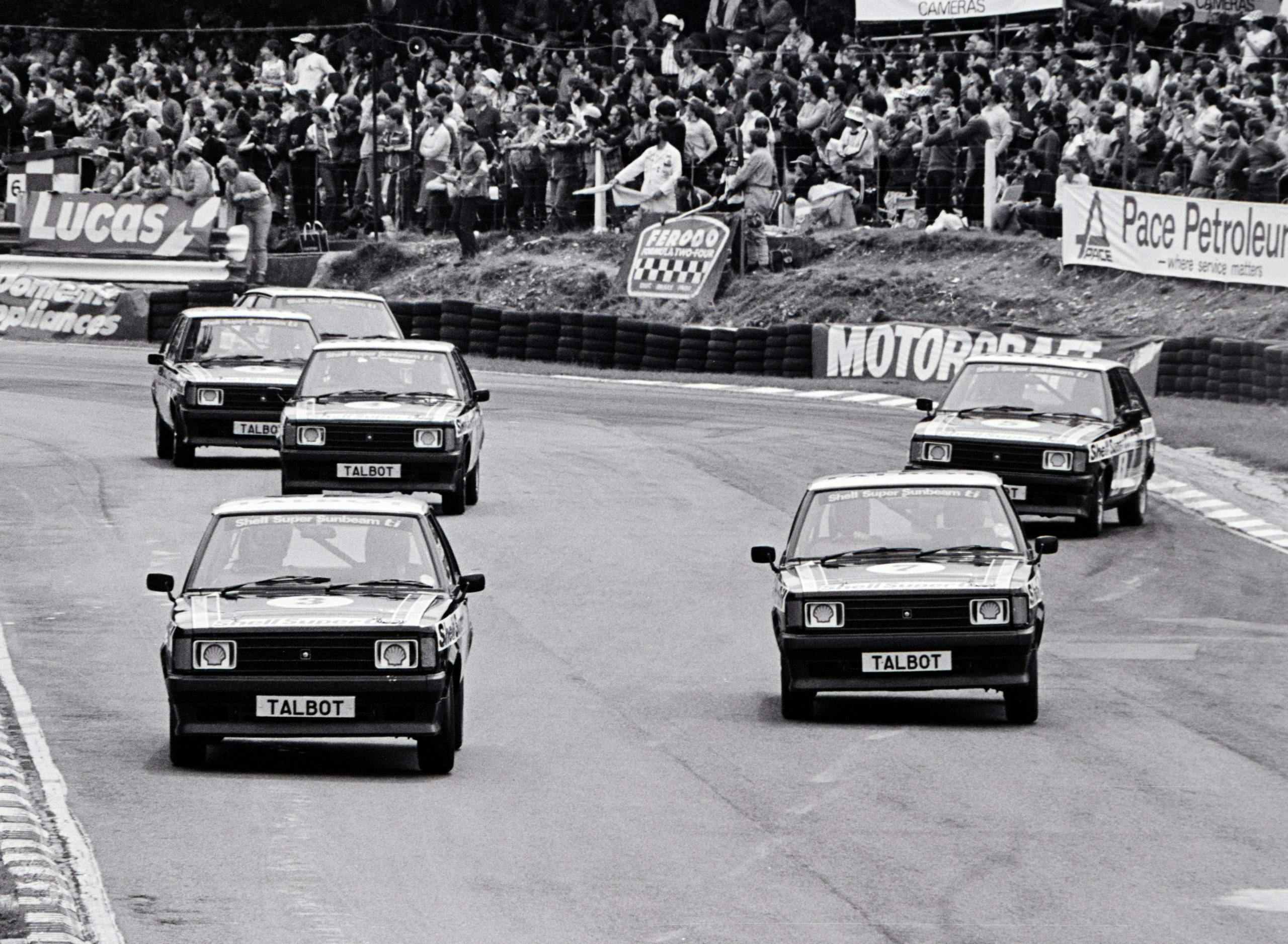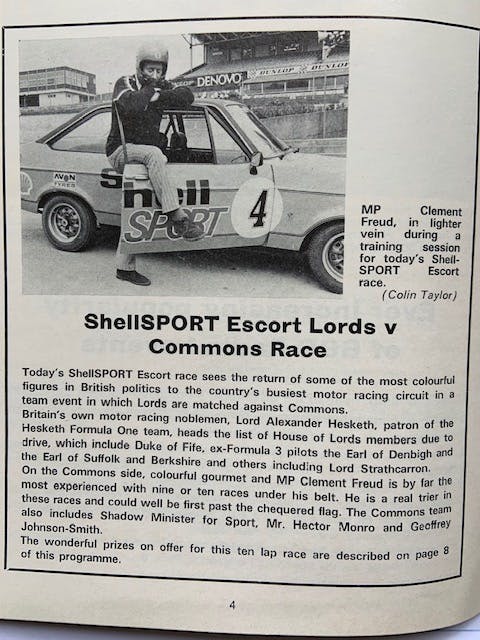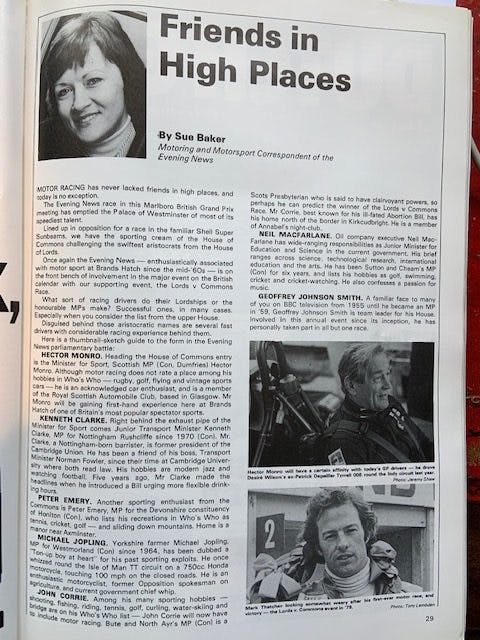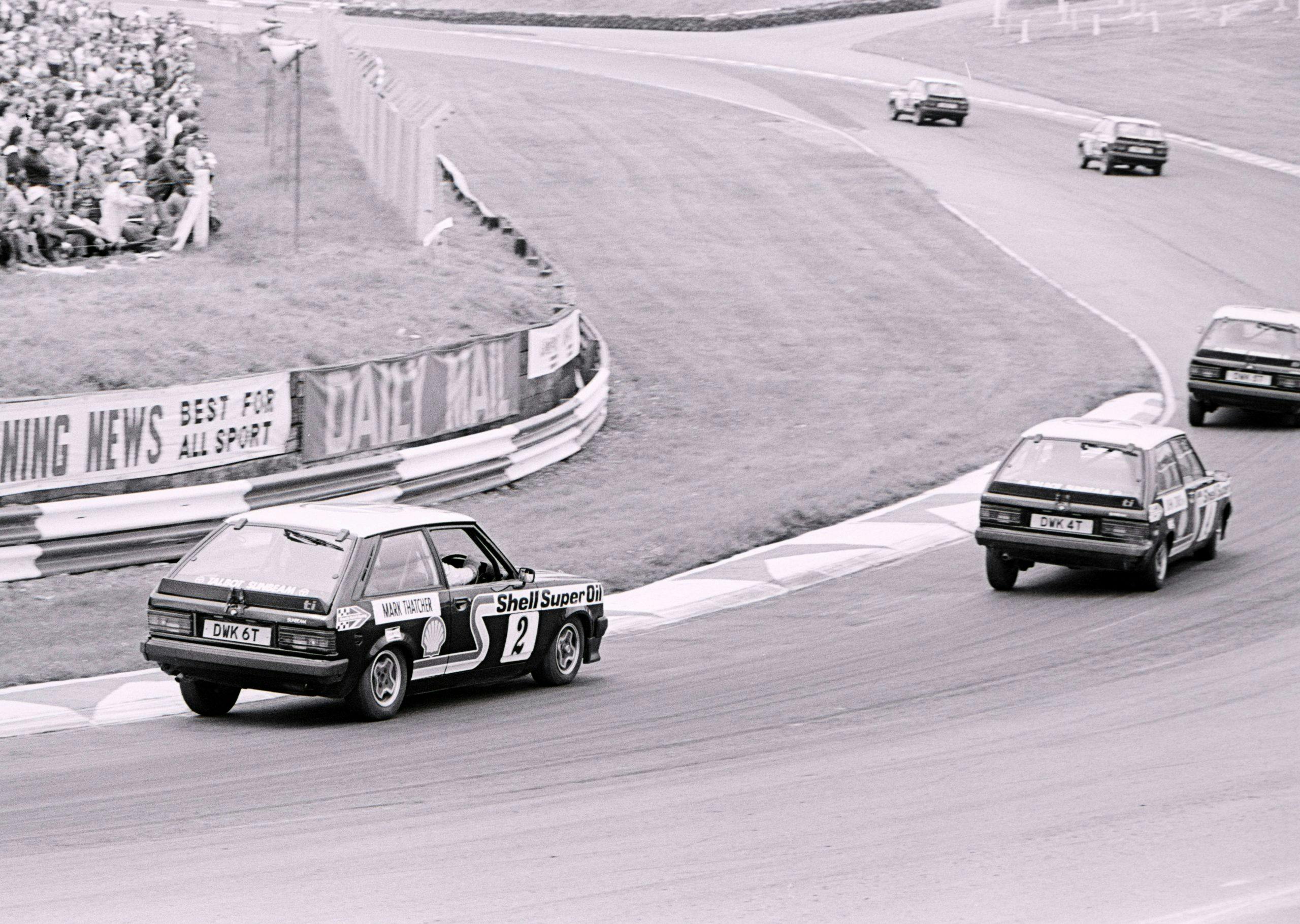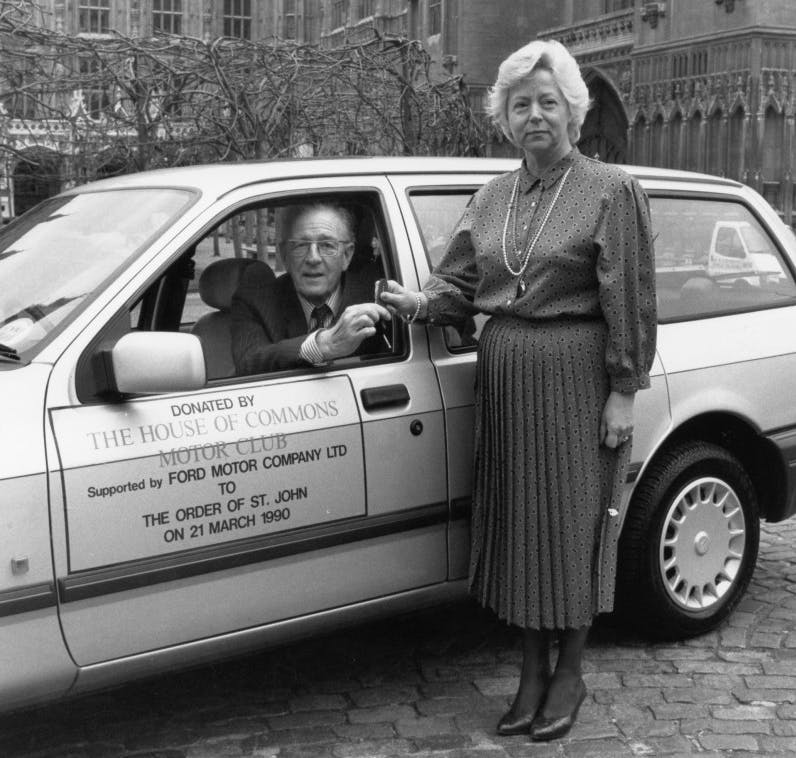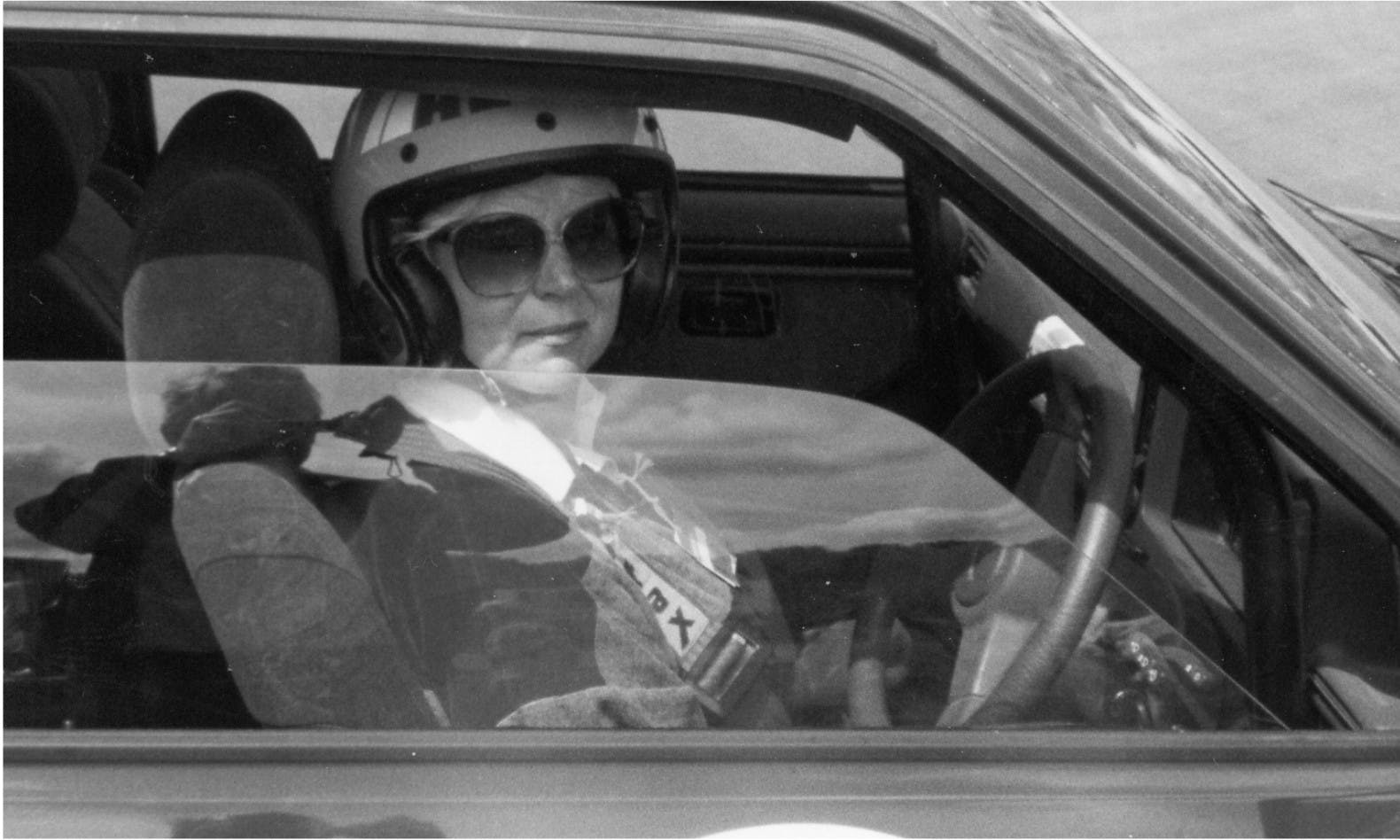Crash, Bang, Wallop! When Britain’s politicians settled differences in the Lords v Commons car races

This story originally appeared on Hagerty UK, and we’ve retained the British lexicon in the interests of preserving a damp, grey atmosphere. Cheers!
Side by side, the two Fiestas enter Brands Hatch’s final corner at speed. Drifting wide, the tyres of one just clip the gravel trap. They dig in, and the Fiesta flips. Once, twice, the car rolls, landing on its roof. Left hanging by his harness inside the stricken Ford is the Labour Member of Parliament for Neath, Peter Hain. His rival in the race and on the benches, Conservative Agriculture Minister Michael Jack, speeds on to the finish.
In a scene that is hard to picture today, for almost 30 years Britain’s politicians regularly used to swap their seats at the Houses of Parliament for racing buckets in the Lords v Commons motor races held at Brands Hatch and, later, at Donington Park. It was a PR stunt that helped draw crowds in the days when tens of thousands would cheer on professional drivers from vantage points and grandstand seats behind fencing—and, during a race weekend, find themselves unexpectedly entertained by the amateur competitors who dared step outside their comfort zones of Westminster’s corridors of power.
In 1973 Brands Hatch owner John Webb was looking for new ways to get people through the gates, explains Chas Parker, author of Brands Hatch: The Definitive History of Britain’s Best Loved Motor Racing Circuit: “John Webb was a real entrepreneur and realised that by putting on something a bit different he would attract people who weren’t necessarily motor racing fans. Brands had a fleet of cars for its racing school and they were used for a number of celebrity events, the House of Lords versus Commons was regarded as perhaps the most prestigious events of all those celebrity races.”
Using its BMW 2002 school cars that first 1973 race saw six Lords take on five MPs, with Lord Denbigh taking the first of several victories in the series—hardly a surprise given his previous experience racing in Formula 3. In 1975 Webb went all-in on celebrity, hosting the BBC Radio 1 Championship Car Races. Now behind the wheel of Ford Escort Sport 1600s the Lords dominated once again, with Denbigh followed home by fellow Formula 3 racer the Earl of Suffolk and Berkshire, and Lords Strathcarron and Hesketh, well-known for their involvement in motorsports, following behind. It was hardly a level playing field, but Liberal MP Clement Freud managed a creditable fourth place.
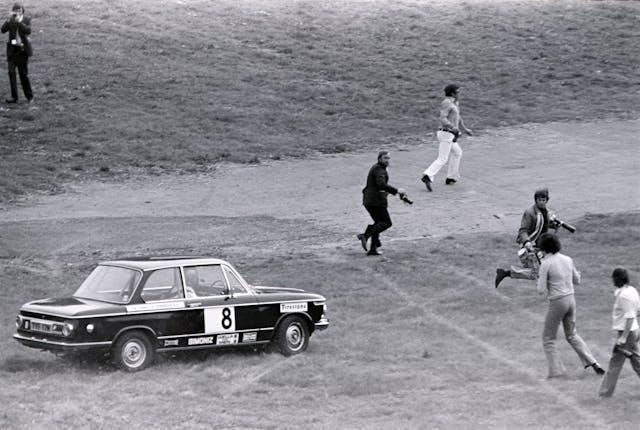
In 1976 the Lords v Commons would support the Shell Sport 5000 European Championship, with Denbigh taking the honours once more. A year later would see Kenneth Clarke, MP for Rushcliffe in Nottinghamshire begin his racing career as his ministerial career also took off.
Speaking with Hagerty, Lord Clarke of Nottingham, as he is now known, recalls getting involved in the race and learning the ropes of driving flat-out. “Somebody approached me as they knew I was a motor racing fan and had watched Grands Prix for decades. I was always in the middle of the field, I think I probably did as well as sixth one year. We knew we were a joke supporting race but we took it seriously, we had professional instruction, and I did get into the rudiments of what I supposed to do but I don’t think I ever got very good at it. I did try opposite-locking through the corners and all that.”
By 1980 Britain’s politicians were supporting the most prestigious race on the calendar—the British Grand Prix. Clarke found himself alongside the Prime Minister’s son Mark Thatcher who managed not to get lost in his Shell Talbot Super Sunbeam. To be fair, Thatcher had paired with Davina Gallica earlier in the year for a six-hour race and come home 11th.
When the parliamentarians returned to Brands Hatch four years later to support the Grand Prix, Elizabeth Peacock, Conservative MP for Batley and Spen in Yorkshire, became the first woman to join the fray. Entering Parliament in 1983 she was one of just 20 women in the House and therefore already something of a pioneer.
“In the 1950s my husband Brian was a great one for hillclimbing and racing,” she tells us. “The House of Commons had a motor club and I decided to join. One day the Speaker Bernard Weatherill stopped me in the corridor and said ‘I hear you’re in with the motor club, well done!’ He gave a dinner for the club which I attended and Bernard told me I should enter the Lords v Commons race.
“I had a day’s practice at Silverstone, organised by a friend of mine and then it was the race.” Peacock was to drive one of a fleet of Ford Escort XR3s. “Their Lordships usually won as they were used to driving fast cars. As the only woman to enter I was determined not to come last. Political parties died that day and it was just you for yourself. Colin Moynihan, the sports minister spun his car onto the grass and did not finish, so I wasn’t last. After the race he was clearly not too happy but being the good sportsman that he is he saw the funny side: ‘Sports Minister last’!”

When Brands Hatch lost the British Grand Prix in 1986 it appears that the MPs and Lords also lost their race for a few years, with no records of racing until 1994, by which time Ken Clarke may well have been Home Secretary, but he still failed to beat Labour MP Richard Burden, who took a rare victory for the House of Commons.
Tim Bampton remembers it well. Now Chief Communications Officer for McLaren racing, he was a press officer at Brands Hatch at the time of the ’94 race and confirms that the Home Secretary was “An enthusiastic student. I remember he overcooked it in practice coming out of Graham Hill bend. His two police bodyguards were in the control tower and they cleared the staircase six steps at a time to get to him. But by the time they got there the marshals were already towing him out of the gravel.”
And so we arrive at where we began, with Peter Hain on his roof in 1994. Now retired as an MP and sitting in the House of Lords, he takes up a story which really began as a child when he grew up in South Africa and attended the Grand Prix at Kyalami. A passionate motorsport fan, when Hain became an MP he jumped at the chance to go racing himself, even if it didn’t quite go according to plan: “Michael Jack was on my inside at Clearways and he just went much wider and I had no space at all. I went into the gravel and for a moment I thought ‘This is ok, I’ve managed to survive, I could get back on the circuit.’ And then the car flipped twice. My wife and kids were in the hospitality suite right above where I crashed and they were horrified. I remember the marshal coming up to me. I was just starting to undo my safety belts and he said ‘Don’t touch it!’ and then he explained to me that often people cause more harm when they undo the belts when they’re upside and fall, and injure their necks.
“All I had was a graze on my knuckles, but I joked to the press that Michael Jack was trying to force a byelection!”
Far from being put off by the incident, Hain would go on to compete several more times, taking a podium when the race moved to Donington in 1998 and then, a year later, crashing a Vauxhall Vectra during the practice session, leaving the track at the infamous Craner Curves during his tenure as Minister for State at the Foreign and Commonwealth Office.
Hain tells Hagerty that he’d come to realise he was never going to make the grade as a serious racer. “A far more experienced racer once told me that you have to be entirely focussed. If you are about to break up with your wife or your girlfriend, or have crisis in your life of some sort, then you’re likely to have an accident. The difference between the fastest time and crashing is absolutely microscopic. Anyway, I was worried about whether I was going to make a flight that evening and the result was that I didn’t even make the start of the race.”
The rival Houses of Parliament would have one final race in 2000. With the 76-year-old Lord Strathcarron taking his first win in almost 30 years of trying it was a fitting finish to one of Britain’s most eccentric and high-risk racing series.
“It’s very hard to imagine it being permitted now by the parliamentary authorities, for healthy and safety reasons,” concludes Lord Hain. “I count it as a great privilege to have taken part. There were some bonuses to being a hard-working MP.”


